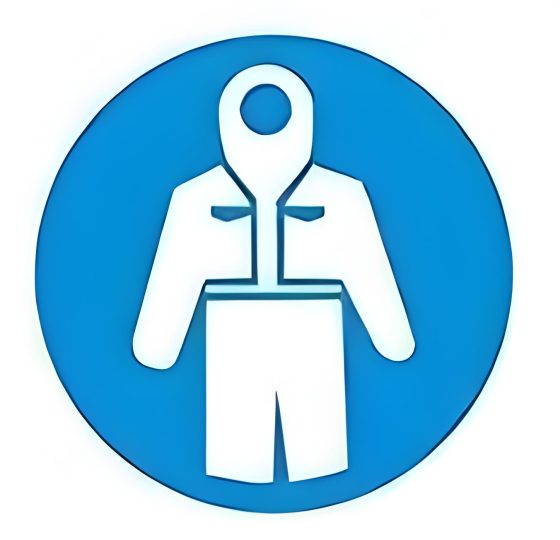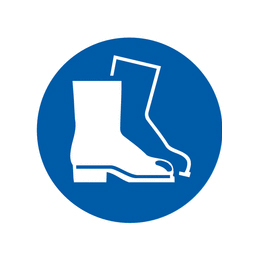Norma EN per gli indumenti
In iso 20471 2013
ISO 20471:2013 High-Visibility Clothing is an international standard for the safety requirements and test methods of hi-vis workwear, and is applicable to high-risk situations. It specifies requirements for “high visibility clothing which is capable of visually signalling the user’s presence” and assesses the suitability and durability of retro-reflective materials.
There are 3 classes of hi vis garments based on the provided levels of visibility. On these hi vis garments the hi vis reflective tape must not be any less than 50mm wide.
|
|
CLASS 3 |
|
CLASS 2 |
|
|
CLASS 1 |
Selection of the most suitable class of garment is based on your risk assessment. However, in certain situations guidance is given, such as if you are working on the highways the ‘Safety at Street Works and Road works’ and the ‘Traffic Signs Manual Chapter 8’ provide information on what type and class of protective clothing you should be wearing.
EN 17353:2020 The standard specifies requirements for enhanced visibility equipment in the form of garments, or devices, which are capable of signalling the user’s presence. The enhanced visibility equipment is intended to provide more conspicuous visibility of the wearer in medium risk situations under any daylight conditions and/or under illumination by vehicles headlights or searchlights in the dark.
IN 17353:2020 – Protective clothing – Enhanced visibility equipment for medium risk situations – Test methods and requirements, supersedes two separate standards and brings together elements of each of the withdrawn standards:
IN 1150:1999 – Protective clothing – Visibility clothing for non-professional use – Test methods and requirements
IN 13356:2001 – Visibility accessories for non-professional use – Test methods and requirements
All products meeting the requirements of the standard are no longer considered in terms of their use, but rather their suitability in providing protection in medium risk situations as defined by their enhanced visibility properties.
The EN 17353 standard is applicable to clothing and devices worn in medium risk situations such as working with slow-moving vehicles, jogging on roads with lower traffic speeds, or cycling. It sets forth the minimum amounts of materials that should be incorporated into products in order to ensure enhanced visibility on an end user. The standard also describes the design requirements for various types of products based on the foreseeable conditions of use by Type “A”, “B” and “AB”.
Type A– Equipment worn by users where the risk of not being seen exists only at daylight conditions. This equipment uses only the fluorescent material as an enhanced visibility component.
Type B – Equipment worn by users where risk of not being seen exists only at dark conditions. This equipment uses only the retroreflective material as an enhanced visibility component. Including:
Type B1 – free hanging retroreflective devices
Type B2 – retroreflective devices temporarily or permanently placed on limbs only
Type B3 – retroreflective material placed on torso or torso and limbs
Type AB – Equipment worn by users where risk of not being seen exists during daylight, twilight and dark conditions. This equipment uses the fluorescent as well as the retroreflective and/or combined performance materials as enhanced visibility components.
However, the EN 17353 standard is not applicable to:
High visibility equipment in high-risk situations, which is covered in EN ISO 20471;
Visibility equipment specifically intended for the head, hands, and feet, e.g. helmets, gloves and shoes;
Equipment integrating active lighting, e.g. LEDs;
Visibility for low-risk situations.
All products subjected to EN 17353:2020 are considered as Category II Personal Protective Equipment according to (EU) 2016/425 and requires an EU Notified body to undergo a CE compliance assessment procedure in order to be marketed with the CE mark when used in the eu, or the UKCA mark in the UK after brexit.
EN343:2003 Performance criteria governs the resistance to water penetration and water vapour resistance (breathability) of the garment.
In iso 14116:2008 Protection against heat and flame. Limited flame spread materials, material assemblies and clothing”.
All three standards have been listed as a Harmonised Standard in the EU Official Journal list of harmonised PPE standards (5th June 2009).
Limited flame spread properties (being superseded by BS EN ISO 14116).
In iso 11612:2008 Protection against heat and flame, Protective clothing for workers exposed to heat.
In iso 14116: Protective clothing against limited flame spread materials Supersedes EN 533:1997
This international standard specifies the performance requirements for the limited flame spread properties of materials and protective clothing.
The standard is not applicable for fire fighters (IN 469) and welders (IN 470 – EN ISO 11611).
The aim is to reduce the possibility of the clothing buring and thereby itself constituting a hazard: the wearer should not get extra injuries due to the burning of his clothing.
The protective clothing is intended to protect workers against occasional brief contact with small flames. The working circumstances offer no significant heat hazard and there is no presence of another type of heat. For protection against heat hazards, we gladly refer to ISO 11612 (Clothing to protect against heat and flame).
The following parameters are used:
- Requirements for limited flame spread index 1
The flame does not spread, there are no flaming debris, no afterglow, a hole may be formed.
- Requirements for limited flame spread index 2
The flame does not spread, there are no flaming debris, no afterglow, no hole formation.
- Requirements for limited flame spread index 3
The flame does not spread, there are no flaming debris, no afterglow, no hole formation, the afterflame times of each individual specimen
EN470-1 (IN 470-1:1995 is being replaced by EN ISO 11611:2007 “Protective clothing for use in welding and allied processes”.)
Different performance criteria for each of these standards have relevance to both fabrics and garments separately to help determine the suitability of garment. ENV50354, CLC/TS 50354, IEC 61482-1, IEC 61482-1-2 These are all standards which have been used or are being used in the constantly evolving field of protection against electric arc.
EN1149-5:2006 Protective clothing with electrostatic properties. The series of CE Antistatic Standards , 1149 have been updated and the parts are separated into test methods and performance requirements.
EN13034 Type 6 ,Protection against Chemical
EN13034:2005 Tipo 6 (PB) Partial body, Protection against Chemical
EN1513 Limited use protection for parts of the body.Protection against Chemical
In iso 11611:2007 Protective clothing for use in welding and allied processes”.
In iso 11611: Fabric meets EN 470 Tear Strength or EN ISO 11611 Tear Strength is = 15 N
 Shanghai Zimai Protection Technology Co., Ltd.
Shanghai Zimai Protection Technology Co., Ltd.







